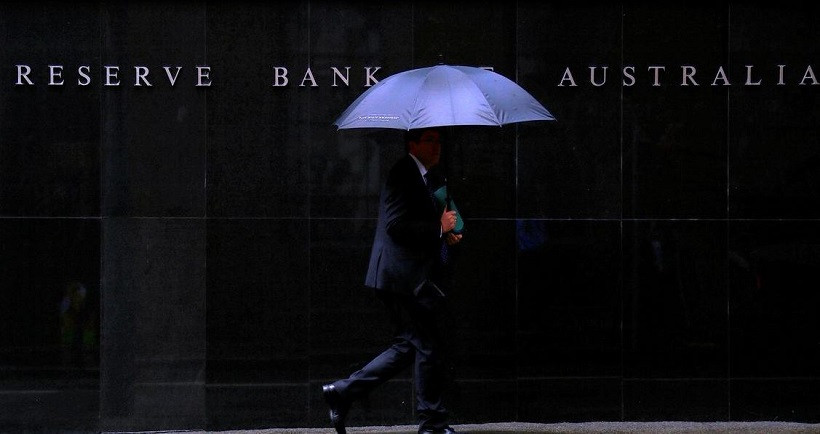
The Reserve Bank of Australia will sum up the results of its regular meeting on September 6, at which it will determine the fate of monetary policy in the medium term. The general expectation is that the RBA will raise interest rates by 50 basis points as it continues to tighten monetary policy conditions. However, not all experts agree with this forecast, so a certain intrigue regarding the September meeting still remains. Further actions of the central bank are also shrouded in fog: judging by the signals voiced in August, the Australian central bank is ready to slow down the rate hike. And if such signals sound more obvious on Tuesday, the aussie may come under significant pressure - even if the RBA raises the rate by 50 points (which is also questionable). In other words, the September meeting will by no means be a passing one. Therefore, there is no doubt that the AUD/USD pair will show increased volatility in the near future.

Looking ahead, it should be noted that the aussie is not able to turn the downward trend - paired with the greenback, it completely depends on the well-being of the American currency. Therefore, based on the results of the September meeting, in fact, two options are possible: either an increase in bearish sentiment (a decrease to the bottom of the 67th figure), or a corrective growth in the area of the 69th figure - again, with a subsequent decline. Given this disposition, we can make an obvious conclusion that long positions on the pair look risky anyway. The aussie is too vulnerable, especially when paired with the greenback who has been holding steady since Federal Reserve Chairman Jerome Powell's speech at the Jackson Hole Economics Symposium.
But the aussie's position has noticeably shaken after the RBA's August meeting. Traders took notice of the softer rhetoric of the accompanying statement and the corresponding messages in the minutes of this meeting. On the one hand, the central bank confirmed that it will continue to raise the interest rate, however, the pace of monetary tightening will depend on the incoming data. In addition, in the accompanying statement of the August meeting, the central bank focused on the stability of the national economy and at the same time did not talk about the need to return core inflation within the target range next year (this time interval was previously indicated). Instead of this phrase, the RBA has used a more streamlined wording "in the course of time", which does not tie the Australian central bank to any specific time frame.
By the way, after the August meeting, it became known that the consumer price index in the second quarter unexpectedly slowed down to 1.8% Q/Q. At the same time, over the previous three quarters, this indicator showed a consistent upward trend.

Of course, all previous alarms are implicit, sometimes only slightly guessed. Therefore, most experts are quite resolute: 27 of 29 economists polled by Reuters said that the RBA is likely to raise rates by 50 basis points at its meeting on September 6. Thus, the rate will be increased to 2.35%. Currency strategists of Australia's Big Four (the country's largest banks - Westpac, ANZ, NAB and CBA) agreed with this opinion, saying they expect a 50-point increase in September. At the same time, UOB Group analysts predicted an increase of 40 points following Tuesday's meeting. Commerzbank analysts agree with them.
If the RBA implements the base case (50-point hike), the aussie will receive temporary support: the AUD/USD pair may jump to the resistance level of 0.6910 (the lower boundary of the Kumo cloud on the daily chart). If the central bank decides only a 40-point increase, not to mention the lower values, the aussie will be under significant pressure. Also, the tone of the rhetoric of the accompanying statement will affect the behavior of the Australian currency. The wording that will be used in the text will say a lot. For example, in the final communique of the August meeting, the central bank removed the mention of the termination of emergency monetary support from the text. The RBA also separately noted that "the exchange rate of the central bank is not on a given trajectory." Such signals put pressure on the aussie.
Returning to the above Reuters survey, it should be noted that most of the economists polled predicted a slowdown in monetary policy tightening at subsequent meetings. In their opinion, the RBA will return to raise the rate by 25 basis points at its meetings in October and November. And in December, the RBA will probably take a break altogether to evaluate the results of the measures already taken.
Thus, before the announcement of the results of the September meeting, it is best to take a wait-and-see attitude on the AUD/USD pair. If the central bank implements the basic scenario, the pair may approach the boundaries of the 69th figure or even test the resistance level of 0.6910 (the lower boundary of the Kumo cloud on D1). But I repeat – longs in any case look risky, while it is advisable to enter shorts on corrective rollbacks. Therefore, (possible) upward momentums can be used to open short positions. Downward targets are 0.6750 (bottom Bollinger Bands on the daily chart) and 0.6705 (bottom Bollinger Bands on the weekly chart).